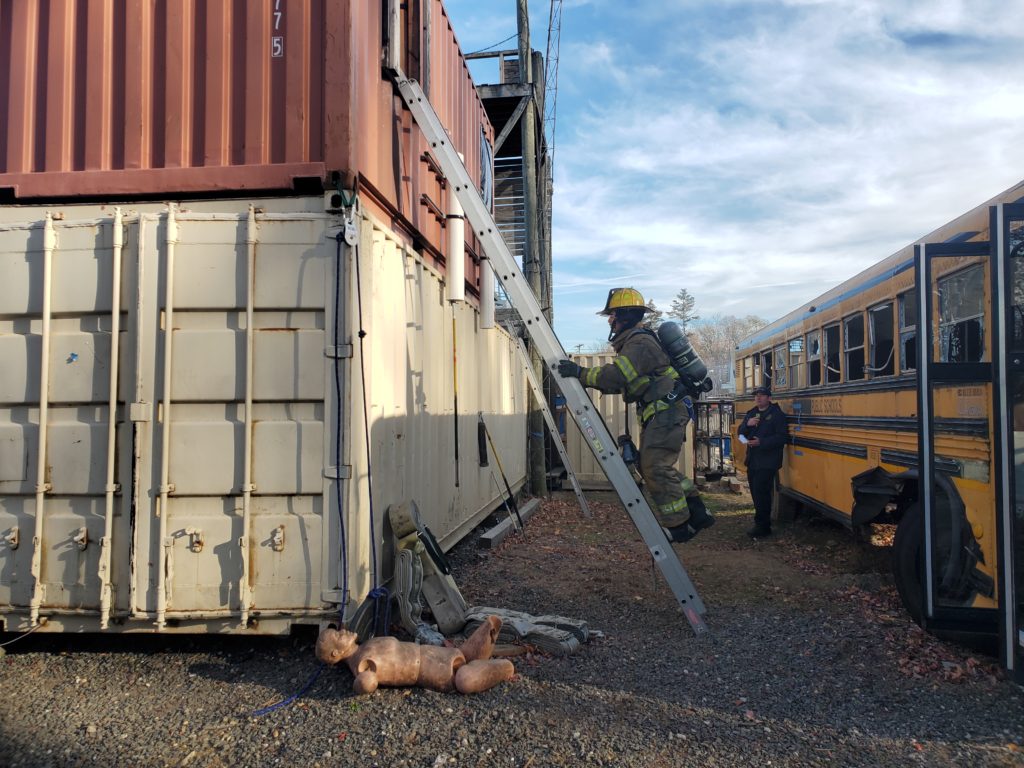
The Cherry Hill fire department has received more than $4.3 million in federal funds in the last five years. On Nov. 20, it celebrated the awarding of $2.6 million from the Staffing for Adequate Fire and Emergency Response (SAFER) and the Assistance to Firefighter Grant (AFG) programs to fund the hiring of eight new firefighters.
The grant money also provides funds for an updated radio technology that will allow firefighters to signal for help and will pinpoint location and other information for hazardous technician training.
“One thing we understand about those who protect us, those in uniform, our first responders, is that they care about people, and they’re proud of what they do,” said Congressman Donald Norcross.
“Public safety is job one for government,” he added. “Keep us safe, make sure that they have the right tools, the right gear, the right personnel. It’s an incredibly tough job. The AFG grant program and SAFER grant program is about doing just that.”
While the department applied for equipment grants in 2018 and 2019, it decided in 2020 to invest in staff through a grant that could help finance education in the areas of building construction, fire behavior – or fire dynamics – leadership and fire-officer training to optimize performance.
Captain Zach Houck, of the department’s training and safety division, compared the performance training to training by athletes that speaks to the mind, rather than just the body.
“At the conclusion of that program,” he explained, “not only did we rethink the way that we trained our people, in teaching them hands-on skills like forcing a door or stretching hose, but we reevaluated and started investing in … those softer skills, like what’s going on inside their head, why are they making mistakes?
“It’s not just because they don’t know how to do it,” Houck added, “it’s because they don’t realize what’s actually starting to occur inside, like their blood pressure is rising, their peripheral vision is shrinking, auditory exclusion.”
The department got a grant in 2021 for high-rise fire training. Grants in 2022 funded hazardous materials technician training and live fire training that will allow units to train as a team for 18 hours each year for the next two years.
Investing in staff has been described as a subtle shift that can be intangible but that has had a huge impact on the department. From the original grant training it received in 2020, the fire department has spent time reflecting on the 40-hour training and understanding how to do the same training in house for its staff each year.
Houck elaborated that the training allowed instructors to consider human factors along with competency, factors like performance anxiety and stress, and work on soft skills to overcome them.
Though the changes may seem subtle, Fire Chief Wade Houlihan noted that because everyone has gone through the training – from senior members to probationary employees – firefighters will learn to be aware and to identify what’s happening within their own bodies in varied situations.
” … You have a curve, almost like a bell curve, where you’re reaching maximum capacity of heart rate and mind and things like that,” Houlihan said. “And you’ll have people identify that now. (They’ll) say, ‘Oh boy, I was feeling like I was right at the curve.’ And being able to gauge their responses has been one of the biggest benefits.
“They come back and say, ‘This is what happened,'” he added. “They recognize it, they understand it and next time, it turns into more of a prime decision, where they recognize they’ve been in that position before and they can actually compute on top of that.”
Assistant Fire Chief Brett DeLuca noted that the training has helped staff manage stress at all ranks, including the chief and command staff who may be directing from outside an incident scene. Firefighters can also apply the model at home and be rested, prepared and mentally sound on the job.
As of Dec. 1, the department will have 80 street firefighters, including the eight new recruits, funded through the grants. In addition to putting out fires, the department is prepared to handle emergencies like water rescue, building collapse, technical rescue and confined spaces rescue. The department also offers its training free to neighboring municipalities.
“This isn’t just about making Cherry Hill more safe,” Houck observed, “this is about making the entire region much more safe and efficient.”


